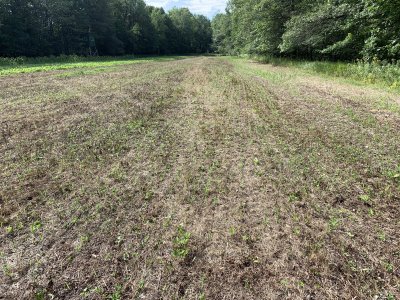The whole debate about triclopyr? It's a forestry use herbicide and it's contained in small amounts in turf herbicides. I've not seen everything in my life, but I've never seen or read anything where it's recommended for ag use. Use it if you wish. The carryover and planting consequences are risks. It's persistence in the soil appears to be dependent on many factors, some known, some unknown. What Keystone said depends, I guess, on what was asked in how much detail and what was heard in response.
It's possible for this to work. The uptake by wheat appears to be a non-event but I'd say that statement applies to a post emergence application. I don't think you'll find any published research on newly seeded wheat. What does a triclopyr label say about seedling turf? That's a hint.
To 2,4-d. It's very possible to use it and eliminate any concern about drift. I'm going to leave a link. If your interested, read the section "How Drift Happens."
https://ipm-drift.cfaes.ohio-state.edu/sites/hdrm/files/imce/Overview of Drift Issues FINAL.pdf
Again, the issue is risk. This time of a different form.

